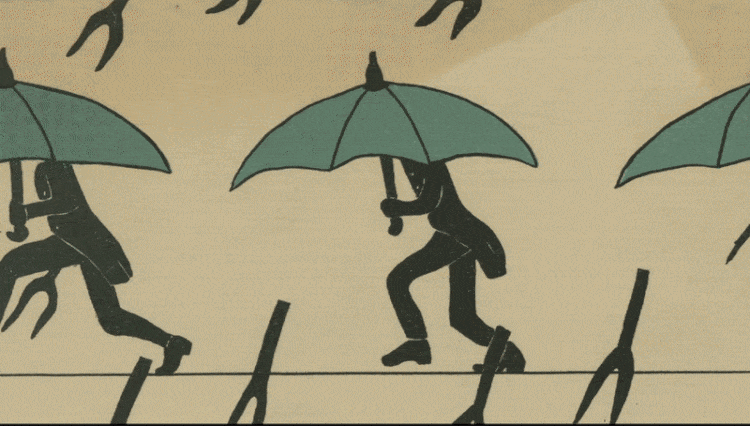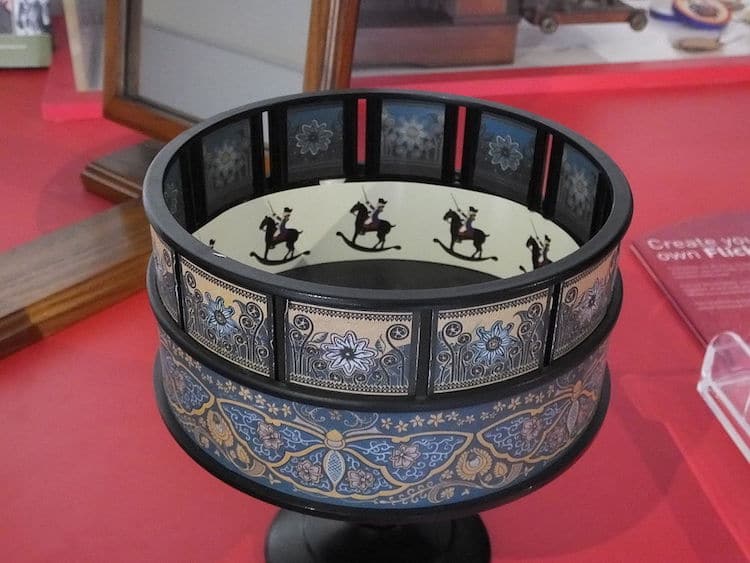These inventions didnt project images on a screen.
Instead, they allowed a person to view the show one at a time.
Thezoetropeis one of these animation devices, and its mesmerizing visual effects are still used today.

What is a zoetrope?
One approach was a zoetrope.
A zeotrope is an early form of animation technology from the 19th century.

A zoetrope at Leeds Industrial Museum, CC BY-SA 3.0, viaWikimedia Commons
The inner surface of the cylinder features a row of sequential images.
The images rotate rapidly and create the illusion of motion.
Who invented the zoetrope?

Zoetrope strip, “Dancers,” c. 1860, public domain, viaWikimedia Commons
He called it theDaedalum, as a reference to theGreek myth of Daedalus.
Zoetropes were followed by other animation devices, includingflip books, thepraxinoscope,and thezoopraxiscope.
The basic principles behind these early inventions led to the creation of motion pictures.

This allowed him to make experimental films from rotating 3D sculptures he called cinetropes.
His early works were made from paper.
Veerle Coppoolse
Dutch artistVeerle Coppoolsehandcrafted a zoetrope built entirely from delicate paper.
TitledMetamorphosis Zoetrope, it explores the life cycle of a butterfly.
The incredibly detailed analog animation shows a paper caterpillar crawling into a cocoon before transforming into a butterfly.
Every development comes forth from the one it precedes.
Kevin Holmes
Kevin Holmesis the brains behind4-Mation, a 3D Zoetrope machine.
Each strip featured 3D-printed motifs that have been painted by hand.
So far, Holmes has made many playful, nature-inspired animations, includingFish eating FishandJumping Frogs.